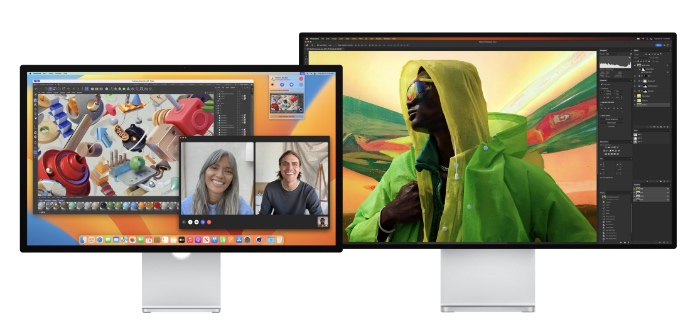Vision Pro is an engineering marvel. However, once you look past its spatial computing prowess, you’re left with a phenomenal monitor that knows no boundaries.
Buying a Monitor is Not an Easy Task and What You Get is a Flat Monitor which Can’t be Moved Around Much
Buying an external monitor for your Mac is not an easy task. There are a ton of things you have to consider before parting ways with your hard-earned money. For example, what sort of bezels should it have, what sort of connectivity options should it offer, will it fit on your desk and the most important one, how big the monitor should be. Ultimately, you do end up finding the best monitor that suits you, but with a handful of compromises you are willing to live with.
On the official-Apple-display side of the fence, you only have a couple of options to choose from. You have the Pro Display XDR which is nothing short of amazing, but comes with a heavy price tag of $4,999. On the other hand, you get the Studio Display with a fairly reasonable price of $1,599. Both are flat displays designed to sit on your desk, the way monitors always have been since forever.

Enter Vision Pro + Mac
However, the Vision Pro has zero limitations, if you are planning to use it as a monitor for the Mac. You can have the display as big as you want in the mixed reality environment or even get rid of your surroundings virtually by working on top of a mountain. In essence, you can place the display wherever you want. You do not need an oversized table to set it up. In fact, you can have the biggest monitor in the planet in the smallest room at your disposal. And don’t forget the amount of privacy you get while the headset is on. No one on earth will ever know what you’re working on – it’s just you and that epic Final Cut timeline.
Apple has a Good Shot at Luring People in with a Dedicated Face Monitor
The Vision Pro starts at $3,499 and is definitely an expensive piece of hardware. Buying it just to use it as a monitor is simply not recommended, unless you have spare cash lying around or love to mix two experiences together – spatial computing and the Mac. However, take away most of the internals from Vision Pro and you’re left with two of the best displays that have ever went into a mixed reality headset. Apple has the chance to bring the price down significantly this way, too. Anything close to $1,999 (lesser the better) is not a bad deal at all.
The face monitor type of hardware unlocks a ton of new experiences that is simply not possible on a regular, flat display. You instantly get a distraction-free work environment as soon as you put the headset on. You get a Spatial Audio sound experience, thanks to the built-in speakers. The built-in displays offer HDR output which means your content will look its best whenever something compatible comes up.
Best of all, you get access spatial video content which you simply can’t view on a flat monitor. All those spatial videos you’ve been shooting using your iPhone 15 Pro and Apple’s massive library of recently released 3D movies can be accessed and consumed immediately.
My point is, the Vision Pro paves the way for a dedicated face monitor and that is something I would vouch for, rather than an iPad-on-the-face which the Vision Pro currently is.
Some readers might come at me and say the Meta Quest 3 can already be used as a monitor for Windows and Mac, both. Sure, I agree, but to a certain extent. Why? Because the Quest 3 has extremely low quality displays and speakers and just isn’t good enough compared to the Vision Pro hardware. It’s great value for money, don’t get me wrong, but if you want a monitor, it needs to be crisp and ready for delicate work. For gaming, the Quest 3 simply rules and I doubt Apple will be able to take it down.
I believe the plain old monitor is not going away any time soon. But, I do hope we get to see some sort of evolution from companies like Apple.




![Download watchOS 11.4 Update for Apple Watch [Update]](https://www.anotherapple.com/wp-content/uploads/2025/03/watchos-11.4-final-update-300x169.jpg)

